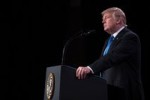It’s Easter 2050. Here’s What American Religion Looks Like.
Advertisement
Supported by
Ross Douthat
By Ross Douthat
Opinion Columnist
Another Easter, another survey showing religion’s recent ebb: This one is from Gallup, confirming a deepening of the 21st-century decline in church attendance.
But diminishment coexists with transformation. The kind of Christian practice that’s likely to endure and thrive as loosely affiliated church members fall away isn’t the kind we associate with the flood tide of American Christianity 60 years ago. Meanwhile, the main alternative to traditional religion, a faith in secular progress, has entered into its own crisis of commitment and belief, with mysticism creeping back in around secularism’s edges.
So let’s try to imagine how these trends might shape American religion a generation hence. Clearly the old order of Protestant denominationalism, Methodists and Presbyterians and Episcopalians clustering around the city green, no longer defines our religious life. In its place, what alignments are taking shape? How might an American in 2050 describe the country’s key religious groups?
Let’s imagine such a description. Start with a group we’ll call the neotraditionalists. These are liturgical and doctrinally conservative Christians, with a Roman Catholic core orbited by some Reformation factions, Calvinists especially, as well as some Eastern Orthodox churches, small but flush with converts.
The “neo” as well as the “traditionalist” matters. These believers have created, rather than inherited, their........
© The New York Times





















 Toi Staff
Toi Staff Gideon Levy
Gideon Levy Andrew Mitrovica
Andrew Mitrovica David Hutt
David Hutt Neve Gordon
Neve Gordon Patrick Gathara
Patrick Gathara Moncef Khane
Moncef Khane Ron Kronish
Ron Kronish Dr Ramzy Baroud
Dr Ramzy Baroud Rami G Khouri
Rami G Khouri Brahma Chellaney
Brahma Chellaney Tarik Cyril Amar
Tarik Cyril Amar Ghada Ageel
Ghada Ageel Steve Wenick
Steve Wenick Brad Glosserman
Brad Glosserman Fernando Romero Nuñez
Fernando Romero Nuñez
